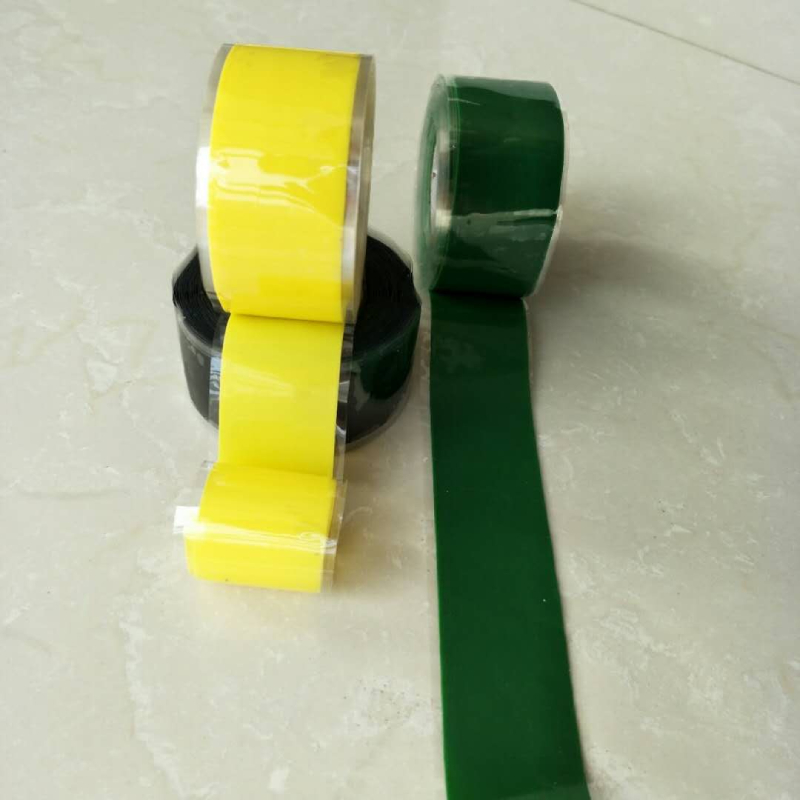Rubber Tape for Water Leakage A Comprehensive Solution
Water leakage can be a homeowner's worst nightmare. It often goes unnoticed until it causes significant damage to the structure, foundations, and interiors of a property. This can lead to costly repairs and even health concerns if mold and mildew begin to grow in damp environments. Fortunately, there are effective solutions to combat this pervasive problem, and one of the most efficient tools available today is rubber tape.
Understanding Rubber Tape
Rubber tape, often referred to as self-fusing silicone tape or waterproof rubber tape, is an innovative product designed to provide a quick and effective solution for sealing leaks and preventing water ingress. Unlike traditional tapes, which often have adhesive layers, rubber tape is made of a rubberized material that bonds to itself when stretched and wrapped around objects. This means it can create a watertight seal without leaving any sticky residue behind and works on a variety of surfaces, including plastic, metal, glass, and rubber.
Advantages of Rubber Tape
1. Ease of Use One of the primary benefits of rubber tape is its user-friendly nature. It is typically designed to be easy to unroll and apply, making it accessible for even novice DIYers. Simply cut the desired length, stretch it around the area of leakage, and wrap it tightly. The self-adhesive properties come into play as the tape overlaps.
2. Weather Resistance Rubber tape is built to withstand extreme weather conditions. It is resilient against moisture, UV rays, and temperature fluctuations, making it an excellent choice for both indoor and outdoor applications.
3. Versatility The tape's ability to adhere to multiple surfaces means it can be used for a variety of applications. Whether fixing a leaky faucet, sealing pipes, mending hoses, or even wrapping electrical wiring, rubber tape proves to be a reliable solution.
rubber tape for water leakage

4. Durability Once applied, rubber tape forms a robust bond that lasts for a prolonged period, often exceeding that of traditional adhesives. This durability significantly lowers the chances of needing frequent repairs or replacements.
Applications of Rubber Tape
Rubber tape can be used in a multitude of settings. In residential homes, it is often utilized to repair leaking pipes, hoses, and gutters. In industrial settings, it can be employed to seal machinery parts and pipes that handle liquids. Moreover, it is a popular choice in vehicle repair, where it is used to fix leaky radiators or hoses. Even in extreme circumstances, the tape can serve as a temporary fix in emergency situations until more permanent solutions can be implemented.
Tips for Application
To achieve the best results when using rubber tape, consider the following tips
- Clean the Surface Ensure the area around the leak is clean and dry. Dirt and moisture can affect the tape's ability to adhere. - Stretch the Tape For optimal results, stretch the tape as you apply it. This enhances the self-fusing properties and ensures a tight, leak-proof seal. - Overlap Layers When wrapping, overlap each layer of tape by at least half its width for maximum coverage. - Allow Bonding Time After application, give the tape some time to fuse. The longer the tape sits undisturbed, the stronger the bond.
Conclusion
Rubber tape is a simple yet highly effective solution for managing water leakage issues. Its ease of use, versatility, and durability make it an essential product for homeowners and professionals alike. By addressing leaks promptly with rubber tape, you can save yourself from the headaches and costs associated with water damage and related repairs. Whether you are tackling minor household leaks or larger industrial repairs, rubber tape can be your dependable ally in ensuring a safe and dry environment.
-
XIANGFAN Rubber Tape-Ultimate Solutions for All Your Insulation NeedsNewsJun.24,2025
-
XIANGFAN Rubber Tape-Protection for Industrial and Residential ApplicationsNewsJun.24,2025
-
XIANGFAN Rubber Tape: Superior Safety and Sealing for Demanding EnvironmentsNewsJun.24,2025
-
XIANGFAN Rubber Tape: Reliable Solutions for Every Electrical ChallengeNewsJun.24,2025
-
XIANGFAN Electrical & Industrial Tape: Powering Reliability Across IndustriesNewsJun.24,2025
-
XIANGFAN Electrical & Industrial Tape: Excellence in Every ApplicationNewsJun.24,2025
